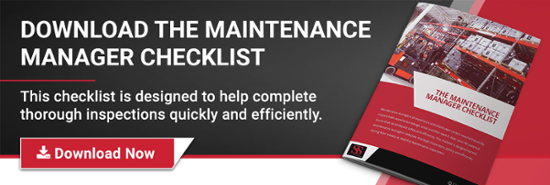Forklift battery maintenance is a major issue for many warehouses. After all, forklift batteries provide motive power for the warehouse’s fleet of forklifts. One critical aspect of battery maintenance is knowing the battery components and how to care for each.
Knowing your forklift battery components—including how they work and what issues they may develop—helps you to improve your ability to maintain your batteries so they work at peak efficiency for longer. To help you (or your team) learn about forklift battery components, here is a list of important components in a forklift battery and some information about them.
Because there are many different forklift battery types, such as 12, 24, 36, or 48-volt batteries, as well as some nuances in design from one battery brand to the next, this overview will focus on the broad details of lead-acid forklift battery components. Why lead-acid forklift battery components instead of lithium batteries? Because, lead-acid types are more prevalent since they are heavy enough to serve as a counterweight for the forklift.
Forklift Battery Component #1: The Battery Case
The external shell of the forklift battery case holds in it all of the individual battery cells, bars, and wires that generate and/or convey power to the forklift when the battery is in use. Case designs may vary somewhat from one manufacturer to the next (as well as from one forklift battery capacity to the next).
Generally speaking, the condition of the external battery case won’t have a major impact on the battery’s performance unless it is cracked or dented severely. Cracks can expose battery cells to damage (or indicate spots where impacts may have already damaged the battery cells). Dents can, if severe enough, interfere with a forklift battery’s ability to seat properly in the forklift.
Forklift Battery Component #2: The Battery Cells
Inside the forklift battery case will be a series of individual battery cells. The number of cells present will vary based on forklift battery capacity—higher-capacity batteries tend to have more cells.
Each lead-acid battery cell can be further broken down into separate battery components:
- A positive plate covered in lead dioxide.
- A negative lead plate.
- Battery terminals attached to each lead plate.
- Separator material that keeps the plates apart but allows electrolytic fluid and ions through so the plates can conduct electricity.
- Electrolytic fluid containing a mixture of water and sulfuric acid to act as a catalyst.
Much of basic battery maintenance is focused on dealing with these battery cells and their contents.
For example, the positive and negative lead battery plates can easily become sulfated if they aren’t properly charged and maintained. As a battery is discharged, the sulfuric acid from the electrolytic fluid can collect on the lead plates of the battery. If left alone for too long, this coating can harden, reducing the forklift battery’s conductivity.
Another key issue is the watering of the lead-acid battery. As the battery is used, the water in the electrolytic fluid will evaporate over time—lowering the electrolytic fluid level in the battery. This exposes the battery plates to open air, which may lead to sulfation and corrosion. So, periodic refilling of the battery with pure, mineral-free water is a must (tap water may contaminate the battery’s plates). However, do not add additional sulfuric acid.
When refilling a battery cell with water, it’s important to avoid overfilling it, as this could also impair battery performance or even lead to the electrolytic fluid spilling out or boiling over during use.
Forklift Battery Component #3: Battery Bars
Battery bars are large pieces of lead that connect all of the individual battery cells—creating a complete circuit so every cell in the forklift battery experiences an even amount of draw when in use.
When performing battery maintenance, checking the battery bars for cracks or other signs of damage can be useful. If the battery bars are cracked, then the power draw on the individual cells might not be even—leading to reduced operating times for the electric forklift and increased damage to some battery cells.
Forklift Battery Component #4: Battery Cables
The cables on a battery can vary greatly in size between different forklift battery types. Higher-capacity forklift batteries tend to have heavier-gauge cabling, though.
When inspecting forklift battery cables, be sure to check the condition of the insulation, making sure they aren’t cracked or torn. Connectors should be inspected for signs of corrosion or wear, as this can impact the conductivity of the battery.
Need help maintaining your electric forklift battery components to achieve peak performance? Get in touch with one of the forklift battery experts here at Southern States Motive Power to learn more about battery maintenance today.






